Chopta Tungnath Trek – Temple Trail with Himalayan Views
Published on June 24, 2025
Chopta Tungnath Trek is one of the most rewarding short treks in Uttarakhand, combining natural beauty with spiritual significance. Starting from the quiet hill station of Chopta, this 3.5 km trail leads you through forests and meadows to Tungnath Temple, the highest Shiva temple in the world. It's perfect for beginners, families, and weekend travelers who want a peaceful Himalayan experience without the demands of high-altitude trekking. Most Chopta tour packages include this trek along with stay, meals, and guide support, making it easy to enjoy without planning stress. You can also extend the trail to Chandrashila Summit, which offers a stunning 360-degree view of major Himalayan peaks like Nanda Devi and Trishul. For those booking a Chopta tour package from Delhi, options are available with transport included, making it a seamless mountain escape. The Chopta Tungnath Trek is perfect for nature lovers, photographers, and anyone seeking calm in the hills.
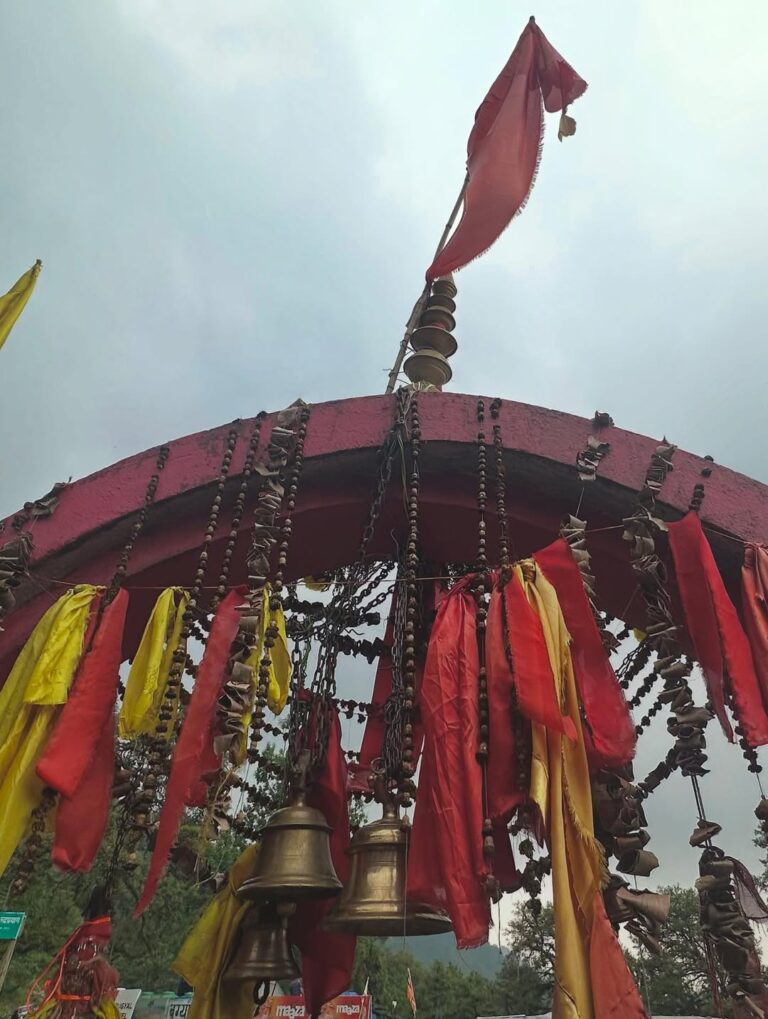
2N/3D Chopta Tungnath Trek Itinerary – Complete Day-wise Plan
Day 0: Delhi to Rishikesh to Sari Village
- Departure: Start your journey from Botanical Garden Metro Station at 10:00 PM.
- Overnight Journey: Travel overnight towards Sari Village via Rishikesh.
- Stop at Devprayag: Witness the mesmerizing confluence of the Bhagirathi and Alaknanda rivers along the way.
Day 1: Sari Village to Deoriatal
- Arrival at Sari Village: Check into your homestay and take some time to freshen up.
- Trek to Deoriatal: Begin your trek to Deoriatal (2.5 km, approximately 1.5–2 hours).
- Enjoy Deoriatal: Soak in the serene beauty of the lake and the surrounding landscapes.
- Return to Sari Village: Head back to Sari Village and enjoy a peaceful evening.
Day 2: Sari Village to Tungnath & Chandrashila
- Breakfast: Start your day with a hearty breakfast at your homestay.
- Drive to Chopta: A scenic drive of about 1 hour from Sari Village.
- Trek to Tungnath Temple: Embark on a 3.5 km trek to the sacred Tungnath Temple.
- Summit Chandrashila: Extend your trek by 1.5 km to reach the breathtaking Chandrashila summit.
- Return to Chopta/Sari: After the trek, return to Chopta or Sari for an overnight stay at the campsite.
Day 3: Chopta to Delhi
- Breakfast: Enjoy an early breakfast at your campsite in Chopta.
- Departure: Begin your journey back to Delhi in the early morning.
- Visit Dhari Devi Temple: Stop by the revered Dhari Devi Temple en route.
- Arrival in Delhi: A long drive of approximately 10–12 hours marks the end of your adventure.
Inclusion
-
One Night Accommodation In Sari Village.
-
One Night Accommodation In Chopta/Sari Village.
-
4 Meals Will Be Provided Throughtout The Trip.
-
AC Transportation.
-
Guide While trekking.
-
Experienced Trip Captain Throught The Trip.
Exclusion
-
5% GST
-
Extra Drinks, Food, Tea and Snacks.
-
Tickets for any sightseeing or extra activity outside the camp area.
-
Travel Insurance and other benefits.
-
Anything which is not mentioned in inclusions.
-
Cost escalation due to any unforeseen reason like weather, road condition landslide etc.
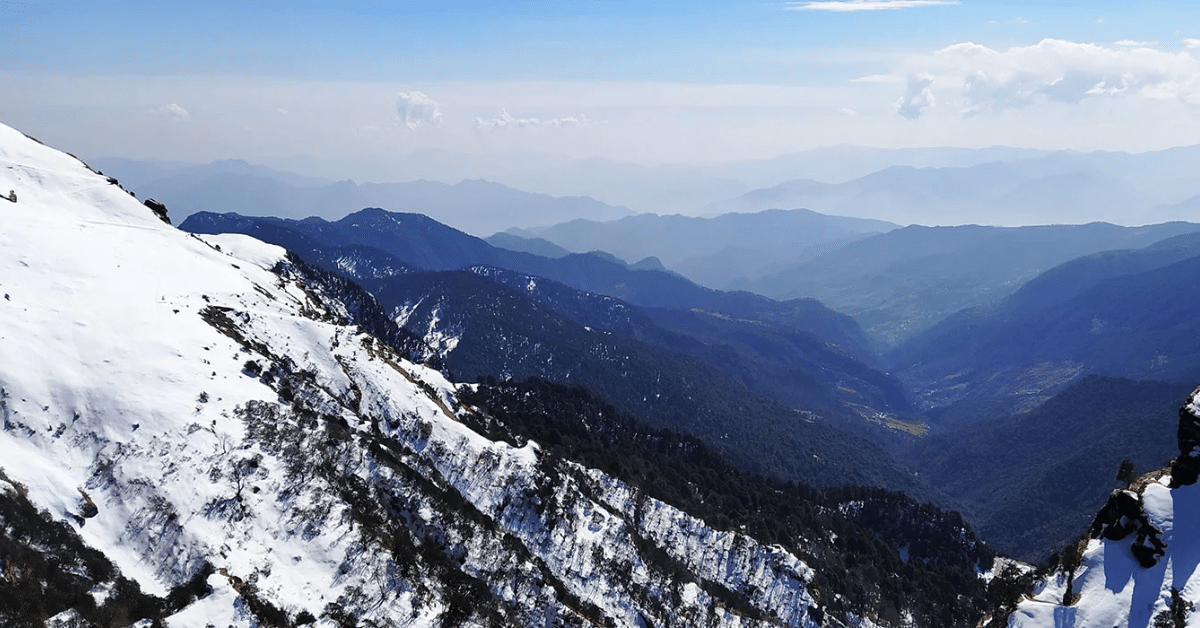
Tungnath Temple Trek – Highest Shiva Temple in the Himalayas
The Tungnath Temple Trek is not just a walk through the mountains—it’s a journey into spiritual history surrounded by natural peace. Situated at an altitude of 3,680 meters, Tungnath is the highest Shiva temple in the world and part of the Panch Kedar pilgrimage circuit in Uttarakhand. The trek to Tungnath begins from Chopta and is short yet rewarding, offering a blend of religious significance, natural beauty, and accessible adventure.
For those booking the Chopta Tungnath trek, the path winds through oak and rhododendron forests, with snow-capped Himalayan peaks occasionally peeking through the trees. As you move higher, the sounds of the forest fade, replaced by a quiet that fits the temple’s sacred energy.
This trail is suitable for both first-time trekkers and spiritual seekers. Whether you're coming solo, with friends, or as part of a chopta tungnath trek from delhi group, the experience is powerful and peaceful.
Key Highlights of the Tungnath Temple Trek:
-
Trek Distance: Approx. 3.5 km one way from Chopta
-
Trek Duration: 2–3 hours (one way) depending on pace
-
Difficulty Level: Easy to moderate (ideal for beginners)
-
Best Time to Visit: April to June & September to November
-
Temple Opening Months: Generally from May to October
Why the Tungnath Temple Trek Stands Out:
-
Spiritual Importance: Said to be over 1,000 years old, Tungnath is one of the five Panch Kedars linked to the Mahabharata.
-
Scenic Trail: Every step offers scenic views of forests, valleys, and distant Himalayan peaks.
-
Minimal Altitude Challenge: Compared to other temple treks in Uttarakhand, this one is easier and more accessible.
-
Link to Chandrashila: Most chopta tungnath trek itineraries also include an optional push to Chandrashila Summit (1.5 km further).
The chopta tungnath trek from delhi is popular among weekend travelers looking for a quick escape with a deeper purpose. With basic gear, a bit of fitness, and the right package, this short Himalayan journey offers a lifetime of memories—whether for devotion, peace, or just the view.
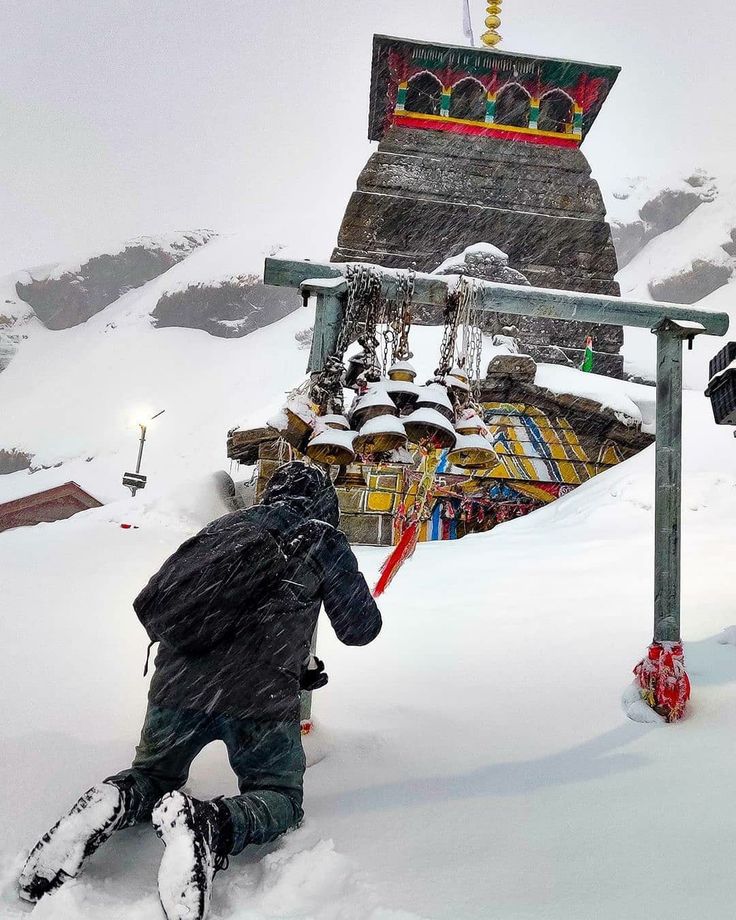
Chopta to Tungnath Trek Route – Trail Conditions & Landmarks
Designed for readers searching trail-related info, this section avoids repetition and uses a fresh approach to highlight the Chopta Tungnath trek route, landmarks, and terrain.
The Chopta to Tungnath trek route is one of the most scenic and beginner-friendly hiking trails in Uttarakhand. Starting from the base point in Chopta village, this 3.5 km path takes you steadily uphill toward Tungnath Temple, blending moderate physical effort with ever-changing Himalayan scenery.
Unlike steeper or rockier treks in the region, this trail is well-paved for most parts. It's lined with stone steps and occasional flat stretches, making it manageable for all age groups. Even first-time trekkers and families find the climb enjoyable, especially with the cool breeze, shaded pathways, and panoramic views along the way.
Trail Conditions:
-
Surface Type: Stone-paved for most of the way, with some natural dirt paths
-
Gradient: Moderate incline with switchbacks, steeper in the last 500 meters
-
Accessibility: Walkable year-round, though snow trekking gear is needed from December to March
-
Safety: No technical climbs or high-risk zones, but shoes with a good grip are essential
Notable Landmarks Along the Route:
-
Forest Entry Point: The trek starts with dense oak and rhododendron forests, especially vibrant in spring. This is also where the temperature begins to drop.
-
Maggie Points / Rest Stops: Small dhabas along the way serve tea, snacks, and basic food—ideal for short breaks.
-
First Ridge Viewpoint: Around 1.5 km in, the trail opens up to a ridge with stunning views of Kedarnath and Chaukhamba ranges.
-
Treeline Exit: After 2.5 km, the trees thin out, revealing rolling meadows and glimpses of the temple in the distance.
-
Tungnath Temple Gate: Near the final ascent, prayer flags and stone signs mark the entrance to the temple complex.
If you're planning the Chopta Tungnath trek from Delhi, knowing the trail in advance helps you pack and pace your journey better. Many choose to start early morning to avoid crowds and catch clear views. The route, while short, delivers everything a Himalayan trek should—quiet, beauty, and a meaningful destination.
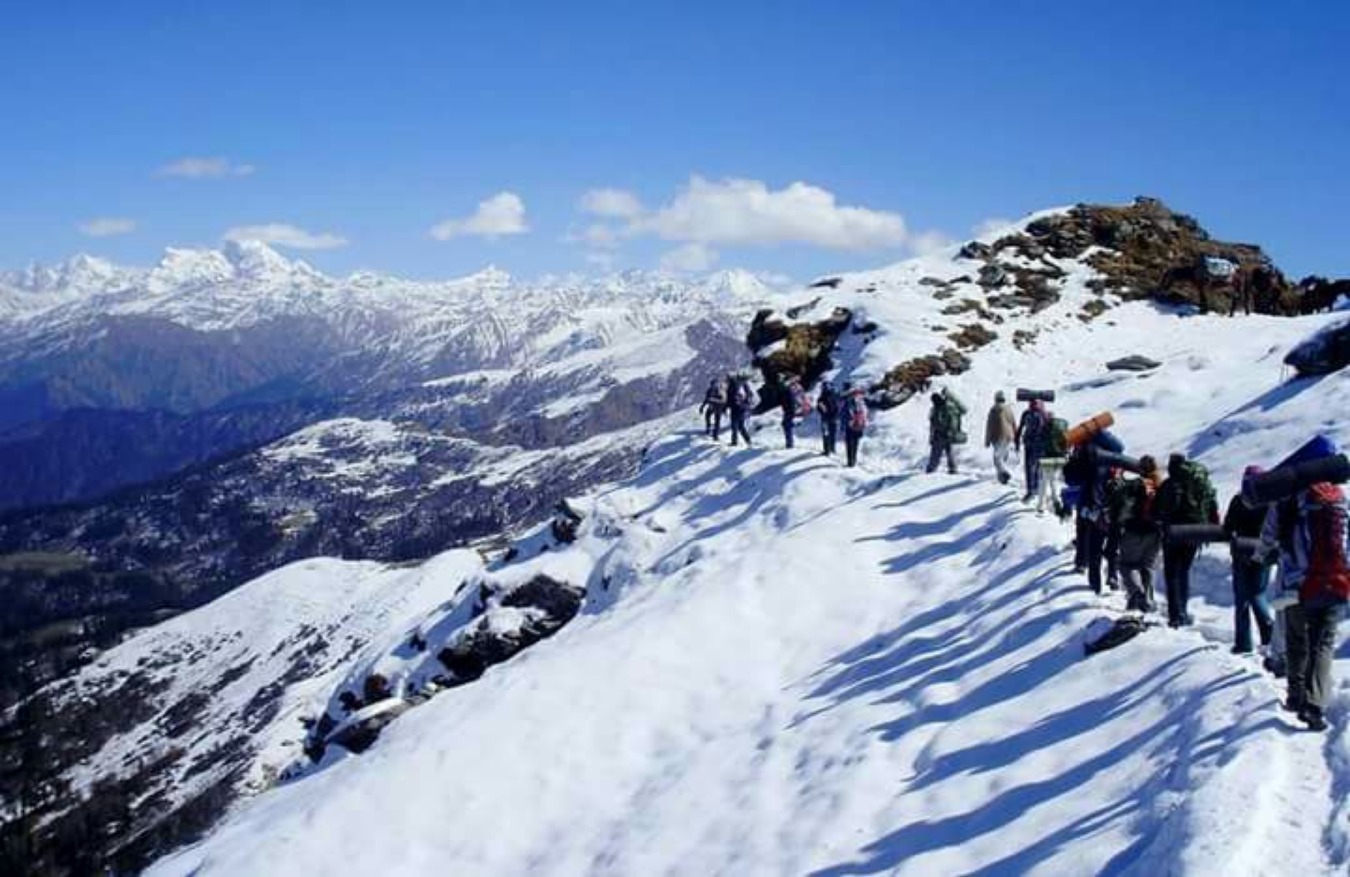
Best Time to Visit Chopta Tungnath – Seasonal Weather Guide
The best time to visit Chopta Tungnath depends on the kind of experience you're looking for—lush greenery, snowy adventure, or clear Himalayan views. As one of the most accessible high-altitude treks in Uttarakhand, the Chopta Tungnath trek is open for most of the year except during heavy snow or monsoon-related disruptions.
Thanks to its moderate trail and religious significance, travelers of all kinds—trekkers, families, and pilgrims—plan their trips based on seasonal conditions. Here’s a detailed look at what each season offers:
Spring (March to May)
-
Weather: Cool and pleasant (8°C to 18°C)
-
Trail Condition: Dry and open, with blooming rhododendrons
-
Why Visit: Best season for beginners, nature lovers, and photographers
-
Trek Experience: Ideal for first-timers on the Chopta Tungnath trek; scenic views with minimal difficulty
Summer (June to early July)
-
Weather: Mild days and cool nights (10°C to 22°C)
-
Trail Condition: Clear paths, light forest breeze
-
Why Visit: Escape Delhi’s heat; perfect for families and groups
-
Trek Experience: Comfortable for day treks, forest stays, and temple visits
Monsoon (Mid-July to August)
-
Weather: Wet and unpredictable (10°C to 16°C)
-
Trail Condition: Slippery and sometimes foggy
-
Why Visit: Ideal only for off-season travelers who enjoy solitude
-
Trek Experience: Not recommended for trekking due to landslides and poor visibility
Autumn (September to November)
-
Weather: Crisp and clear (5°C to 15°C)
-
Trail Condition: Excellent visibility, dry trail
-
Why Visit: Perfect time for clear Himalayan views and crowd-free trekking
-
Trek Experience: One of the best seasons for the full Tungnath to Chandrashila trek
Winter (December to February)
-
Weather: Cold and snowy (–5°C to 8°C)
-
Trail Condition: Snow-covered; trekking requires caution and gear
-
Why Visit: Magical snow-covered landscapes; adventure-focused trips
-
Trek Experience: Great for experienced trekkers who want a snowy chopta tungnath trek
Overall, the best time to visit Tungnath is April to June and September to November—when the weather is stable, the views are incredible, and the temple is open for pilgrims and trekkers alike.

What to Pack for Chopta Tungnath Trek – Essentials Checklist
The Chopta Tungnath trek may be short in distance, but it crosses through forests, rocky paths, and at times snow-covered stretches—especially if you’re continuing to Chandrashila. Packing right makes the difference between a smooth, enjoyable experience and unnecessary discomfort.
Whether you’re traveling in summer or winter, this essentials checklist will help you prepare properly.
Clothing Essentials (Season-Appropriate Layers)
-
Thermal innerwear: A must for winter months (Oct–Feb)
-
T-shirts (full & half-sleeve): Quick-dry fabrics preferred
-
Fleece jacket or down jacket: Even summer evenings can get chilly
-
Windproof outer shell / Rain jacket: For sudden mountain showers
-
Trekking pants or joggers: Avoid jeans; choose stretchable and quick-dry material
-
Woolen cap, gloves, muffler: Required during winter or higher altitudes
Footwear & Accessories
-
Sturdy trekking shoes: Waterproof with good ankle support and grip
-
Woolen socks + extra pairs of regular socks
-
Flip-flops/slippers: Useful around camp or in guesthouses
-
UV-protected sunglasses & sun cap
Personal Items & Toiletries
-
Sunscreen (SPF 50+), lip balm with SPF
-
Toothbrush, biodegradable soap, face wipes
-
Toilet paper or tissue roll
-
Hand sanitizer and small towel
-
Moisturizer (skin dries out fast at altitude)
Other Essentials
-
Backpack (20–30L): Lightweight with rain cover
-
Water bottle (1L) or hydration pack
-
Flashlight/headlamp: Power cuts are common in remote areas
-
Basic medicines: Pain relief, cold/flu tablets, band-aids, altitude sickness tablets (if needed)
-
Energy bars, dry fruits, ORS packets
Optional but Useful
-
Power bank (charging points are limited)
-
Camera or GoPro (if you're into photography)
-
Small lock (for luggage safety at homestays or camps)
-
Trekking pole (especially useful during snowy or steep climbs)
For those on a chopta tungnath trek during winter, don’t forget snow gear like gaiters, waterproof gloves, and microspikes. If you're going as part of a group or Chopta tour package, some of the heavier items like tents and sleeping bags may be provided—but personal comfort and safety gear should always be packed yourself.

Extending the Trek – Tungnath to Chandrashila Summit
If you’ve reached Tungnath Temple, you’re just a short push away from something even more spectacular — the Chandrashila Summit. The chandrashila trek is a natural extension to the Chopta Tungnath route and is often the highlight for those who want a 360-degree view of snow-capped Himalayan peaks without venturing into difficult terrain.
This 1.5 km stretch beyond Tungnath is steeper and more rugged but completely doable for anyone with moderate fitness. While the chopta chandrashila trek is not long, it gains significant elevation quickly, so it’s best tackled early in the day for clear views and fewer crowds.
What Makes the Chandrashila Summit Trek Special?
-
Elevation: Approx. 4,000 meters (13,000+ ft) above sea level
-
Viewpoints: Panoramic sights of Nanda Devi, Kedarnath Dome, Chaukhamba, and Trishul ranges
-
Spiritual Value: "Chandrashila" means "Moon Rock" — believed to be the place where Lord Rama meditated
-
Sunrise Experience: Trekking early morning rewards you with golden light across the Himalayan peaks
Trail Info from Tungnath to Chandrashila:
-
Distance: ~1.5 km from Tungnath
-
Time Required: 45 mins to 1.5 hours (depending on pace and snow conditions)
-
Trail Type: Rocky and steep, with loose gravel in parts; snow-covered in winter
-
Difficulty: Moderate (slightly more demanding than the Tungnath trail)
Tips for Doing the Chandrashila Trek:
-
Start your trek before sunrise for the best views
-
Carry a trekking pole and wear proper shoes — the descent can be slippery
-
In winter, use gaiters and microspikes; the summit may be fully snowbound
-
Weather changes fast — carry layers even if the day starts sunny
The chandrashila summit trek is often included in weekend treks and is highly popular among those coming for the chandrashila trek from delhi. For such a short trek, it offers an unparalleled payoff — majestic views, fresh air, and the satisfaction of reaching a true Himalayan summit.
If you're in Chopta and have the time, the Chopta Chandrashila trek is absolutely worth the extra effort.

Where to Stay Near Tungnath – Camps, Homestays & Guesthouses
Finding the right place to stay near Tungnath can enhance your entire trek experience. Whether you're visiting for the spiritual journey of the Tungnath temple trek or as part of a scenic getaway, the Chopta region offers a variety of stays—from budget-friendly homestays to cozy camps under the stars.
If you’ve booked a Chopta tour package, many of these accommodations are already bundled into the itinerary. But for independent travelers or those on a Chopta tour package from Delhi, it helps to know your options in advance.
Popular Stay Options Near Tungnath:
-
Camps in Chopta:
-
Dome tents, alpine tents, and luxury Swiss tents are common
-
Great for stargazing and close-to-nature experience
-
Usually come with meal packages and bonfire nights
-
-
Homestays in Duggalbitta or Baniyakund:
-
Run by local families; warm hospitality with home-cooked food
-
Clean, comfortable, and budget-friendly
-
Ideal for those looking for a quiet, cultural experience
-
-
Guesthouses & Eco-lodges in Chopta Market Area:
-
Fixed rooms with attached washrooms
-
Suitable for families or groups who prefer more solid infrastructure over tents
-
Basic amenities, but reliable comfort
-
Location-Wise Stay Suggestions:
-
Chopta Base: Closest to the Tungnath temple trek starting point
-
Duggalbitta (7 km before Chopta): Quieter and more affordable
-
Baniyakund: Known for wide meadows and large camp setups
-
Ukhimath (30–40 mins away): Better option during heavy snow when Chopta roads are closed
Tips for Booking Accommodation:
-
If you're traveling during peak season (April–June, Sept–Nov), pre-book your chopta tour packages
-
In winter, confirm if roads are open to Chopta; else, stay at lower altitudes like Ukhimath
-
Check if the stay offers hot water, as not all high-altitude places do
-
Most camps and homestays don’t have internet — come prepared to unplug
Whether you're trekking or relaxing, staying in the Chopta region completes the Himalayan experience. Booking a Chopta tour package from Delhi ensures your stay, food, and trek are well-organized—so you can focus on the mountains, not the logistics.
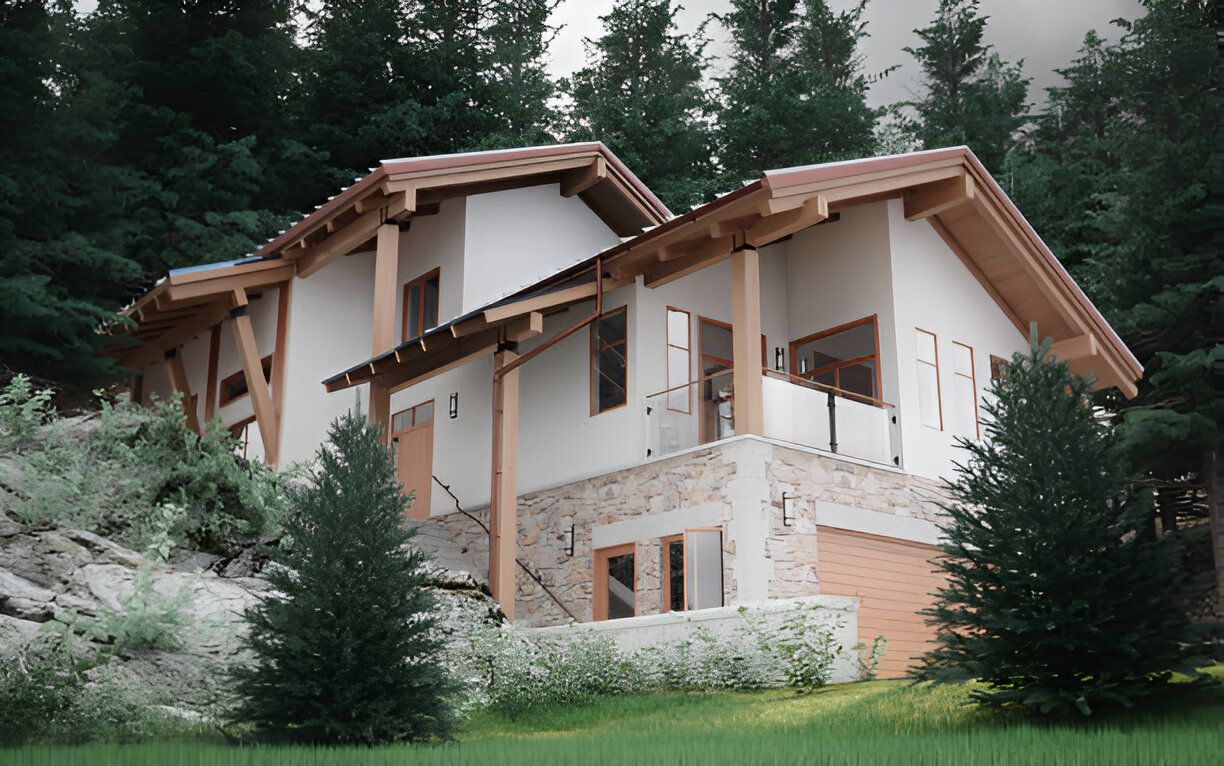
Chopta Tungnath Trek Package Cost – Budget to Premium Options
The Chopta Tungnath trek package is one of the most affordable Himalayan experiences available—ideal for beginners, weekend travelers, and spiritual seekers alike. Whether you're hiking to the sacred Tungnath temple trek or planning to extend the route to Chandrashila, there are packages to suit every budget.
The total cost depends on the duration, type of stay, group size, and whether transport from cities like Delhi or Rishikesh is included. Here's a quick look at what's typically included and how costs are structured.
Budget Chopta Tungnath Trek Package (₹2,500 – ₹3,800 per person)
-
Stay: Basic tents or homestays (shared rooms)
-
Meals: Simple vegetarian meals (breakfast and dinner)
-
Guide: Local trek leader included
-
Excludes: Transport from Delhi, personal gear rental, and forest entry fees
-
Ideal For: Backpackers, solo travelers, college groups
Standard Package (₹4,500 – ₹6,500 per person)
-
Stay: Comfortable Swiss tents or private homestay rooms
-
Meals: Full meal plan (breakfast, lunch, dinner, tea)
-
Guide: Certified local guide for Chopta Tungnath trek
-
Inclusions: First aid, permits, bonfire (seasonal), basic trek gear
-
Optional: Add-on transport from Rishikesh or Haridwar
-
Ideal For: Weekend groups, couples, small families
Premium Chopta Tungnath Trek Package (₹7,500 – ₹11,000 per person)
-
Stay: Premium camps with attached washrooms or eco-resorts
-
Meals: Multi-course meals with snacks and beverages
-
Transport: Pickup/drop from Delhi or Dehradun included
-
Trek Gear: Hiking poles, snow boots (seasonal), and oxygen support (if needed)
-
Ideal For: Corporate teams, curated experiences, or winter trekking enthusiasts
Cost-Saving Tips:
-
Book in groups to reduce per-person costs
-
Look for weekday departures—less crowd and better rates
-
If doing the tungnath temple trek in winter, confirm that gear is included
-
Combine with Chandrashila for better value if you're already trekking
A well-chosen chopta tungnath trek package can save you money, ensure safety, and offer a smoother overall experience—especially for first-timers heading into the Garhwal Himalayas.

Frequently Asked Questions About Chopta
1. What is included in a typical Chopta tour package?
Most Chopta tour packages include transportation, accommodation, meals, guided treks to Tungnath Temple and Chandrashila, and basic camping gear if required.
2. How difficult is the Chopta Tungnath trek?
It’s a moderate trek suitable for beginners with basic fitness. The trail is well-marked and scenic.
3. What is the best time to visit Chopta and Tungnath?
March to June and September to November are ideal. Snow lovers prefer December to February.
4. Is the Chandrashila trek suitable for beginners?
Yes, the Chopta Chandrashila trek is beginner-friendly and often chosen by first-time trekkers and families.
5. How long is the Chopta Tungnath trek?
The trek from Chopta to Tungnath is around 3.5 km one way, and an additional 1.5 km to Chandrashila summit.
6. What’s the altitude of Tungnath and Chandrashila?
Tungnath Temple sits at 3,680 meters, while Chandrashila summit is at 4,000 meters above sea level.
7. Are there Chopta tour packages from Delhi or Haridwar?
Yes, you can book a Chopta tour package from Delhi, Haridwar, Rishikesh, and Dehradun with flexible pricing options.
8. What is the average Chopta tour package price?
The price typically ranges from ₹5,500 to ₹9,000 per person, depending on the duration, group size, and inclusions.
9. Is Tungnath temple open throughout the year?
No, Tungnath Temple remains open from April/May to October/November and closes during winter due to heavy snowfall.
10. What kind of wildlife can I see in Chopta?
Chopta is rich in biodiversity—expect to see monals, musk deer, langurs, and a variety of Himalayan birds and flora.
.jpg)

.jpg)
